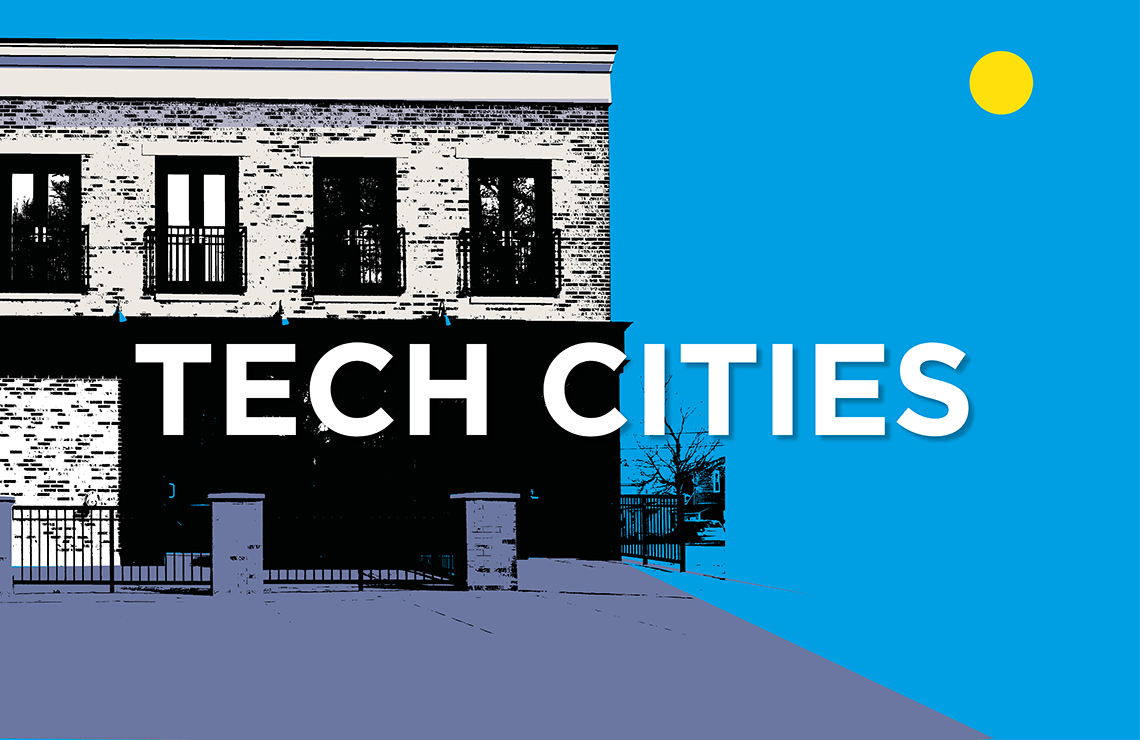As corporates adopt ESG strategies, they can dictate location and expansion plans. That’s also important if they want to attract the best and brightest. Tech talent wants to live and work in places that are vibrant, healthy, fair and well governed.
Environment – Sustainability
Air quality is a factor in our tech city ranking, and in general, the better the quality of the air, the higher ranked a city is in the Tech Cities index. Cleaner, greener cities are more appealing places in which to build and grow a business. Locations in emerging economies such as China and India tend to have poorer air quality figures than those in more developed locations, but even here there are exceptions: Hangzhou and Shenzhen both ranking in the top 15, offer notably better air quality than the largest Chinese cities. China has made significant strides in improving air quality, especially along the more populated coastal regions by introducing more stringent energy and pollution standards, while relocating heavy industry away from larger population centres.
As national and local governments place more emphasis on renewable energy usage, both for cars and for homes and businesses, the air quality of cities around the world will continue to improve. Implementation of other CleanTech and ClimateTech solutions now and in the coming years will also support air quality improvement and other elements of environmental sustainability and may provide an edge in attracting tech businesses with strong ESG commitments. Such companies are also more likely to locate in forward-looking cities where there is more chance of their technology being deployed.
Air quality in selected Tech Cities
Source: Savills Research using WAQI
Note: The Air Quality Index is based on measurement of particulate matter (PM2.5 and PM10), Ozone (O3), Nitrogen Dioxide (NO2), Sulphur Dioxide (SO2) and Carbon Monoxide (CO) emissions
Social – Gender
Equality in the workforce is another key indicator of a city’s ESG performance. A more inclusive working environment is better for talent acquisition and productivity; firms are able to access a larger pool of labour, happier staff can mean output is higher too. This is particularly significant in a time of intense competition for skills and future demographic trends that will see working age populations shrink in advanced economies in the coming years.
Paris (ranked 9th in our overall Tech Cities index) and Seoul (ranked 16th) each score highly for gender equality. South Korea has made strides in providing legal protections for women in the workplace, while in France the government is seeking to boost gender equality such as encouraging more fathers to take parental leave and legislating transparency around pay in an effort to close the gender pay gap. New York in 2022 legislated increased pay transparency for their workers, giving workers and particularly female workers, agency in the hiring process.
San Francisco is also taking steps to increase gender equality both within the tech industry and across the Bay Area’s economy. From encouraging transparency around pay to reducing unconscious bias to encouraging mentorship and advancing women in leadership roles. These initiatives are aimed at boosting female labour force participation and improving the outcomes for women in work, though there is still significant progress to be made. While immense policy strides have been made globally, the lived experience for many women is much different from the legal protections they are afforded.
Governance – Affordability
In many cities, the tech industry developed in fringe locations where working and living space was affordable.
Tech start-ups would base themselves in Shoreditch in London, Kreuzberg in Berlin, or Brooklyn in New York City to take advantage of the comparatively lower costs in what was once a fringe location. However, the meteoric rise of the tech sector has driven up costs in such locations as early movers attracted investment and development in these areas, resulting in price rises and ultimately becoming too expensive for people and companies that originally put these neighbourhoods on the map.
As a consequence of diminishing affordability, cities are acting. The City of Austin gives people from gentrifying neighbourhoods priority in the application process for the affordable housing being sold. To benefit from the programme, people first need to be making less than Austin’s family median income and live or have lived in a neighbourhood in the process of gentrifying.
Other cities are working to create more inclusive urban development. Community land trusts (CLTs) are local organisations run by community members to develop and manage truly affordable housing – London CLT is one such example.
Other interventions such as minimum density requirements, home repair grants and allowing additional units can help preserve and increase the supply of affordable housing units.
For many tech firms and cities looking to attract tech industry and talent, a combination of factors is key to increasing the sustainability of the industry going forward. From gentler impacts on the planet, to improving gender diversity within the workforce, to ensuring that tech talent has affordable, quality places to live, looking after people and the planet will likely continue to boost growth and the impact of the innovations from tech.



